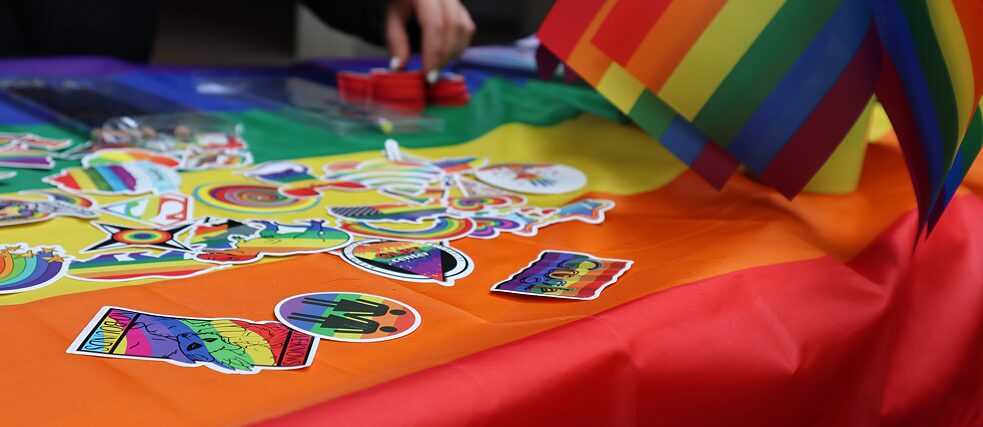Gender and sexual diversity
Living out diversity at school

Why do we need to make diversity tangible at school? Frank G. Pohl, head of the School for Diversity advisory office for North Rhine-Westphalia, explains how discrimination affects learning and how schools can create more space for diversity.
By Frank G. Pohl
The diversity of German society and the reality of students’ lives may not always be immediately visible on an ordinary day at school. For example, if a student belongs to a Jewish faith community, has two mothers at home, or is intersex, teachers rarely find out about this in subject lessons. And students have the right to choose what they want to share.
Teachers who have diversity in their classrooms in mind can help students to learn better. Regardless of the subjects being taught, it is the educational duty of schools and their teaching staff to reflect social diversity in learning content and tasks. The key to this is an accepting attitude.
Effects of discrimination on learning outcomes
Students are formally protected against discrimination by Germany’s equality act (AGG) and schools legislation. In reality, effective anti-discrimination starts with practical prevention in planning lessons. When a diverse range of people is represented – for example of different origin, gender, sexuality, or social class – that benefits all learners.
Inclusivity is an issue for everyone
In the book Diversität im Klassenzimmer (Diversity in the Classroom) which I wrote with my colleagues Birgit Palzkill and Heidi Scheffel, we use the example of gender and sexual diversity to describe how teachers can prevent discrimination and sexualized violence and enable everyone to learn and grow fully in their own way, in a School for Diversity. Understandings of gender and sexual identity have long since gone beyond the categories of woman and man or heterosexual and homosexual. Statistically, there are lesbian, gay, bisexual, trans*, intersex, or queer (LGBTIQ*) students in every classroom. Every day at school you can see how difficult it is for these young people to be expected to fit into a clear ideal gender identity. This means that addressing gender and sexual diversity is an important issue for everyone. Teaching must ensure that the personal integrity of all students is absolutely respected.
On its website, School for Diversity offers example lessons and projects (in German) for different subjects, which support teachers in their lesson planning. Facilitation teams offer regular training sessions on gender and diversity. In addition to questions of content and methodology, the success of the lesson depends greatly on how credible the students find the teacher: is what they say consistent with what they represent as a person? Teachers must be clear about their own attitudes and role in the prevailing gender culture and reflect on what effect their own behaviour has on the students. Should a teacher respond to students’ questions about their personal position? There is no one-size-fits-all answer to this question. Care must be taken to ensure that both students’ and teachers’ boundaries and a professional distance are maintained.
School as safe space: a task for institutions
Especially in times when the acceptance of visible diversity is threatened again, even within the European Union, such symbols of solidarity, LGBTQIA*-friendly schools, and schools-based human rights work are vital.
AGG: General Equal Treatment Act, also colloquially referred to as the German Anti-Discrimination Act. It came into force in 2006 and aims to “prevent and eliminate discrimination based on racial or ethnic origin, gender, religion or worldview, disability, age or sexual identity.”
LGBTIQ*: Abbreviation for lesbian, gay, bisexual, trans*, intersex, or queer. The acronym is meant to represent all gender and non-heterosexual identities. The asterisk* (called the gender star in German) is used as a placeholder, as is the underscore_, to make all genders and identities visible beyond “male” and “female.” Several studies on text perception have shown that when only the masculine form is used, readers do not think that women, transgender, intersex, and nonbinary people are included.
References
DJI study: Coming-out – und dann?! Coming-out-Verläufe und Diskriminierungserfahrungen von lesbischen, schwulen, bisexuellen, trans* und queeren Jugendlichen und jungen Erwachsenen in Deutschland. Claudia Krell / Kerstin Oldemeier 2018. bpb-Schriftenreihe, Bd. 10170
Diversität im Klassenzimmer. Geschlechtliche und sexuelle Vielfalt in Schule und Unterricht. Birgit Palzkill / Frank G. Pohl / Heidi Scheffel, Cornelsen 2020